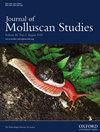Where is the genus Elysia in the western Atlantic? Potential distribution, species richness and representation in marine protected areas
IF 1.2
4区 生物学
Q2 MARINE & FRESHWATER BIOLOGY
引用次数: 1
Abstract
The western Atlantic Ocean is one of the areas with the largest species richness of sea slugs in the genus Elysia (30 out of the 101 species described have been reported in this region). Nevertheless, the lack of knowledge on many of these species hinders efforts to estimate regional richness and identify the factors affecting their distribution. We used the maximum entropy algorithm Maxent to develop ecological niche models for 14 species of Elysia in the western Atlantic Ocean. These models were meant to show the potential distribution of the genus and identify locations with the highest richness. Input data used to build niche models were presence records (obtained from several sources) and bioclimatic and geophysical variables from the Bio-ORACLE and MARSPEC platforms. Species with less than seven records were considered for the calculation of richness, but not for modelling. Results show low habitat suitability for the species modelled here at the mouth of rivers and in hypoxic zones and low-temperature areas. The two variables that best explained species distribution patterns were the distance to shore and the maximum monthly temperature. From the total area with adequate environmental conditions for the genus, only 20.3% is located within marine areas under some protection category.Elysia属在大西洋西部的哪里?海洋保护区的潜在分布、物种丰富度和代表性
西大西洋是Elysia属海蛞蝓物种最丰富的地区之一(该地区报告了101种海蛞蝓中的30种)。然而,由于缺乏对其中许多物种的了解,难以估计区域丰富度并确定影响其分布的因素。我们使用最大熵算法Maxent建立了西大西洋14种Elysia的生态位模型。这些模型旨在显示该属的潜在分布,并确定丰富度最高的位置。用于建立生态位模型的输入数据是存在记录(从几个来源获得)以及来自Bio ORACLE和MARSPEC平台的生物气候和地球物理变量。记录少于7个的物种被考虑用于丰富度的计算,但不用于建模。结果表明,该物种在河口、缺氧区和低温区的栖息地适宜性较低。最能解释物种分布模式的两个变量是到海岸的距离和最高月温度。在该属具有足够环境条件的总面积中,只有20.3%位于某些保护类别的海洋区域内。
本文章由计算机程序翻译,如有差异,请以英文原文为准。
求助全文
约1分钟内获得全文
求助全文
来源期刊

Journal of Molluscan Studies
生物-动物学
CiteScore
3.00
自引率
8.30%
发文量
36
审稿时长
3 months
期刊介绍:
The Journal of Molluscan Studies accepts papers on all aspects of the study of molluscs. These include systematics, molecular genetics, palaeontology, ecology, evolution, and physiology. Where the topic is in a specialized field (e.g. parasitology, neurobiology, biochemistry, molecular biology), submissions will still be accepted as long as the mollusc is the principal focus of the study, and not incidental or simply a convenient experimental animal. Papers with a focus on fisheries biology, aquaculture, and control of molluscan pests will be accepted only if they include significant advances in molluscan biology. While systematic papers are encouraged, descriptions of single new taxa will only be considered if they include some ‘added value’, for example in the form of new information on anatomy or distribution, or if they are presented in the context of a systematic revision or phylogenetic analysis of the group.
 求助内容:
求助内容: 应助结果提醒方式:
应助结果提醒方式:


